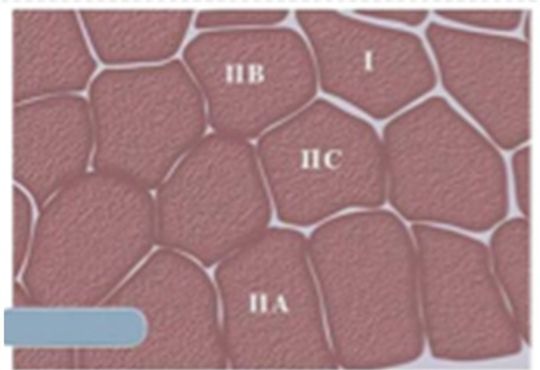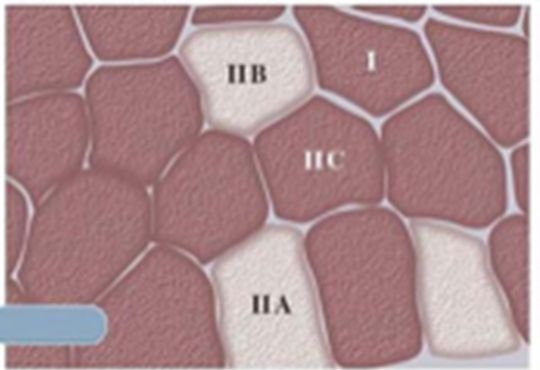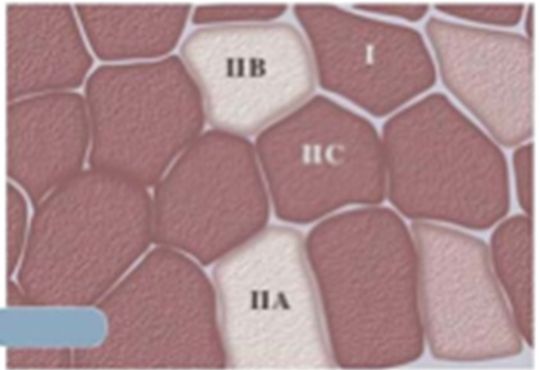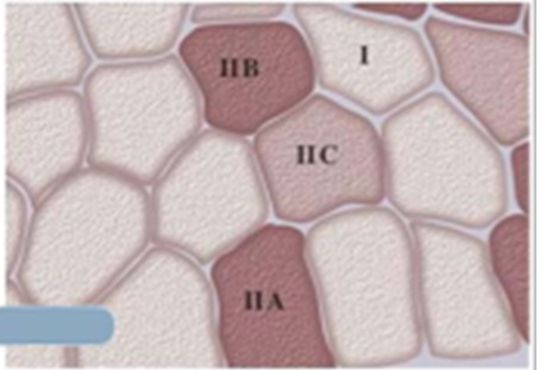In this post we will be talking about the different types of muscular fibers that humans have. It is correct to say that we have two types of muscular tissues that have complementary functions. Depending on your fiber composition you will be better at some type of exercises!
1 – Heterogeneity in the composition of muscle fibers
Not all the fibers that make up a particular muscle have the same mechanical and metabolic characteristics. Depending on their speed of contraction, their resistance to fatigue and their metabolism, skeletal fibers are classified into different types. The classical nomenclature meets its histochemical qualities, which are associated with its protein composition and metabolic characteristics.
2 – Types of muscle fibers
Basically, two types of fibers are distinguished:
Slow fibers or type I (slow-twitch):
– Sometimes referred as ‘red fibers’, as they contain a large amount of myoglobin and have high capillary density in their contour.
– They are very resistant fibers to fatigue. They practically do not tire or do it so slowly because they consume ATP at low speed.
– Participate in slow and reduced movements, generating little force.
– Participate mostly in muscles of postural character.
Fast fibers type II (fast-twitch):
– Also sometimes referred to as ‘white fibers’, since they practically lack myoglobin and have low adjacent capillarization.
– They consume ATP at high speed through anaerobic mechanisms.
– They are present in the muscles involved in fast movements.
– Mammalian rapid fibers have three main subtypes: IIa, IIb and IIc. Recent studies have shown that in humans only subtypes IIa and IIc exist. This is confusing, since in humans it has been referred to as type IIb fibers that coincide in their characteristics with the IIc fibers of other mammals (see illustrations).
Experimental demonstration in a mamifer muscle section

Figure 1. Without staining. All muscle fibers show the same appearance.

Figure 2. Rapid fiber revelation with a weak base. Simulating Strength-Power.

Figure 3. Revelation of type I fibers with alkaline re-incubation. Simulating Strength.

Figure 4. Type I fiber revelation in aerobic work.
3 – Factors that affect heterogeneity in fibrillar composition
Muscles vary their fibrillar composition to meet the functional demands from their role in movements or in maintaining the posture. This is also reflected in a high heterogeneity in the topological distribution of the fibers in each muscle or muscle fascicle.
The genetic factors and the level of training cause wide individual variations in the fibrillar composition, even in the same muscles between different subjects. That determines their physical capacity and fitness for different sports specialities.
It has been shown that the phenotypic expression of slow or fast fiber depends on several independent signalling pathways. Today the mechanisms of interaction between genetic programming and certain environmentally based factors, such as tissue hypoxia and oxidative stress (production of oxygen free radicals) are beginning to be known. This interaction justifies the myotypological changes associated with training, but perhaps it can also help explain the muscle deterioration associated with the ageing process.
The composition of muscle fibers varies greatly among athletes of different specialities. Endurance sports demand high aerobic capacity and fatigue resistance, while throws, jumps, and other activities of high intensity and short duration require maximum power regardless of fatigue. Thus, while in a marathon runner or a road cyclist we can find up to 80 per cent of slow fibers, this percentage is inverted in a sprinter.
The individual fibrillar composition determines familiarization with one or another way of competing in games and activities since childhood, and is decisive when choosing a sport, both amateur or high level competition.